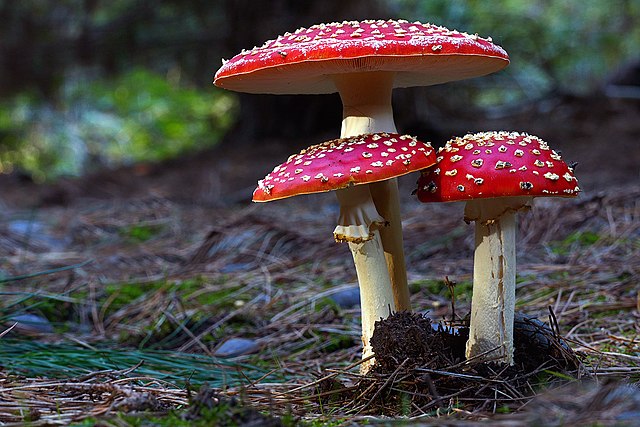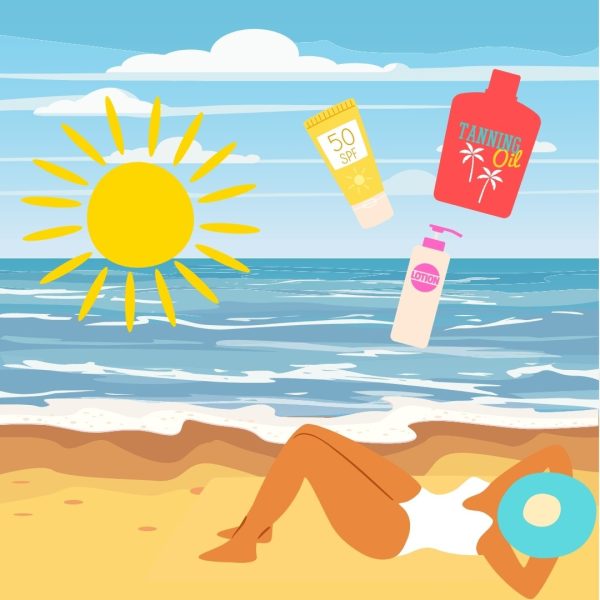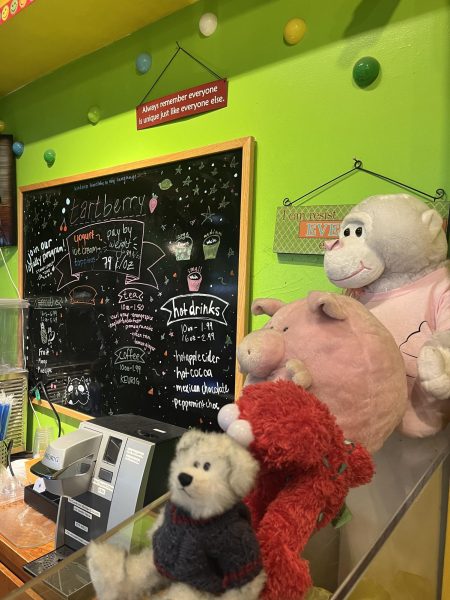Species Spotlight: Top 10 mushrooms of the Pacific Northwest
Note: This review is not a guide to foraging and or eating mushrooms. Mushrooms can be dangerous in the wild, especially when ingested, and this review is meant to be a simple and entertaining review of mushrooms. It is not a guide. See links to more resources and education about mushrooms at the end of the article.
If you have ever taken the time to appreciate the fine details of Oregon’s vast landscape, you’ve probably seen bright and intricate mushroom caps or multicolored shelves jutting off of trees that put life into wildlife. In the fifth installment of PNW Species Spotlight (following reviews on frogs, salamanders, fish, and cryptids) we venture into the realm of fungi for the first time; specifically looking at the mushrooms of Oregon.
- Lion’s mane
The Lion’s Mane mushroom has the best nicknames of any mushroom on this list. It goes by names such as the Mountain Priest mushroom, Bearded Hedgehog Mushroom or Bearded Tooth Fungus. It’s part of the tooth fungus group, a group of mushrooms noted for growing toothlike or spiny projections. The Lion’s Mane grows in a clustered mass of spines off of hard-wooded trees. Despite the fact that they are a cluster of spines, the Lion’s Mane mushroom looks very soft; this duality of the mushroom along with its many names makes this mushroom quite the addition to the list.
- Shaggy Ink Cap
The Shaggy Ink Cap mushroom commits hard to its punk phase. It emerges from the ground as a pure white cylinder, and soon blossoms as it grows a cap and turns pink. Then, suddenly, it turns black and grows scales. The mushroom secretes “ink” from the scales and slowly dissolves, spreading its spores through the ink. It’s edible, but just to be difficult the mushroom will rapidly dissolve after picking and has a terrible shelf life. The aesthetic of these mushrooms is astounding.
- Chicken of the woods
This is chicken disguised as a mushroom. This mushroom tastes like chicken, is cooked like chicken and stores like chicken. There’s no way it isn’t chicken. This mushroom is a practical joke. It’s just weirdly cut chicken getting glued to trees. There’s no other explanation. Regardless, this “mushroom” grows in shelves, generally off the side of trees. It can also weigh up to 100 lbs, and on average it grows to about two feet across. Quite the curious size, considering that the average chicken grows to be a little over two feet wide…
- Golden chanterelle
This mushroom is what I would consider to be the “golden child” on this list. The Golden Chanterelle is shaped like a flaring horn on old record players, and the color can only properly be described as a crayon yellow. These mushrooms are regarded as the tastiest mushroom on the list, with a natural hint of paper and a fruity aroma. Its golden chalice shape is unique and enticing. Very nice mushroom overall.
- Black trumpet (of death)
Black Trumpet mushrooms, also known as the Black Chanterelle, are actually not deadly at all! In fact, they are very good for your health. 100 grams of Black Trumpet mushrooms contain 69.45 grams of protein, 13.44 grams of carbohydrates, 87 mg of vitamin C, 4.88 grams of fat and a total of 378 calories. They just look like trumpets of death because of their dark coloration, which I would argue actually looks cool. They are the Iceland of mushrooms.
- Morel
Morels are the most expensive fungi on this list, hands down. There are over 100 subspecies of Morel, and most types are prized for their use in cooking. They kind of look like pinecones glued to an eraser. But their strange appearance is made up for by the fact that they are poisonous when they aren’t cooked, which is pretty cool in my opinion because it means that they have a little fight in them underneath their bougie exterior.
- False morel
So you thought that just because you read the Morel review, you knew all about Morels? NOPE! GET PLAYED! You just fell into the trap of a False Morel. Morels and False Morels look very similar, the only visible difference is that the cap of a true Morel is hollow, while the cap of a False Morel is wrinkled. It is often easy to mix these two up, but this is a serious problem as false morels are horribly toxic, and can lead to stomach issues, loss of muscle coordination and death in the short term. And even if you survive the toxins at first, there is research to suggest that there are long term health effects from False Morels. Don’t get pranked.
- Turkey tail
The Turkey Tail mushroom is a stockless mushroom, meaning that it doesn’t have a stem. It grows on the side of trees in shelves. It is also a polypore mushroom, meaning that these mushrooms can be found in a variety of colors from black, white, and even green. There are some medicinal qualities to this mushroom. In Japan, they are an experimental cancer treatment, but the lack of research on the subject has prompted the FDA to dissent on the use of the Turkey Tail as a cancer cure.
- Death cap
The Death Cap is more toxic than Kanye West. Half of one of these mushrooms could kill an adult human, and its toxins are so potent that even after it is cooked, it’s deadly. It has a relatively bland appearance, but that works in this mushroom’s favor as it is often mistaken for other types of mushrooms It has killed at least two Roman emperors and is responsible for the majority of mushroom-related deaths. Morbid, I know, but you have to respect the grind. Frankly, despite its accomplishments, this mushroom has positively no pizazz. It’s grey, mushroom-shaped and definitely not tasty. It sacrificed its looks and edibility to kill monarchs though, so it has still earned a place on this list.
- Fly agaric
Simple. Classic. The pinnacle of design. Some things never go out of style, and this classic silhouette of a mushroom frankly sets the bar and raises it. The bright red cap, the white accents; it’s flawless in every sense of the word. Their toxicity makes the Fly Agric a relatively powerful hallucinogen, but their effects are sporadic which make them uniquely dangerous. There is a history of use in Christianity as well as shamanism in many different cultures. However, its most influential and world changing appearance was definitely when it was the model for the mushrooms in the Mario franchise. Definitely a very cool mushroom!
The biggest thing I’ve learned through writing this review is that mushrooms are nature’s cruel joke. For every beautiful, delicious, ailment-curing mushroom, there is a mushroom that looks exactly the same except it will kill you with no remorse. Usually, this series ends its installments with a message urging you to go out and experience the wonders of the Pacific Northwest.
If you want to go out and find some mushrooms for yourself, please do research to learn more. Check out things like online forums, or foraging guides. Not only does it make wandering through Oregon’s beautiful wilderness safer, but also you’ll learn a lot about some amazing fungi right outside your door.















Carver • Oct 3, 2022 at 1:41 pm
This article was the most informative piece I have read to date. Keep up the good work!
Rubie • Apr 27, 2022 at 12:39 pm
Awesome job yet again Owen!
Julian • Apr 27, 2022 at 12:38 pm
Next you should do a tier list of US presidents from Oregon